Citrine
Yellow variety of quartz
Quartz is the reference stone for hardness 7 on Mohs´ scale of hardness
Citrine shop
Synonyms and trade names: golden topaz, Madeira topaz
Thank goodness these misleading terms, which were accepted trade names, are only rarely encountered today (and should be abandoned altogether).
Can be confused with: all yellow gemstones
Localities: natural citrine is quite rare. The colour is mostly rather pale, often with a slightly brownish (smoky) tinge. The most important deposits are in Brazil and Russia.
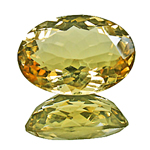
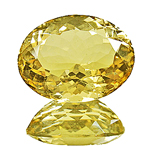
Two naturally coloured citrines from Brazil
Most citrines offered by the gem trade are heat-treated amethysts or heat-treated smoky quartz.The colours of treated citrines are in general more intense and more attractive than those of natural citrines.
The procedure is legitimate, accepted by the CIBJO and must be disclosed at the point of sale.
Colour: from pale yellow to orange. For yellowish orange stones of lighter tone the trade name Palmyra citrine has taken hold. Deep orange stones, sometimes with a reddish or slightly brownish tinge, are called Madeira Citrines.
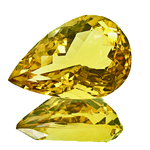
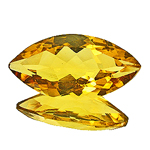
Two citrines (heat-treated)
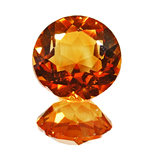
Madeira citrine (heat-treated)
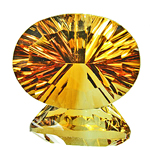
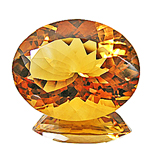
Two Palmyra Citrines (heat-treated) in concave cut and conventional cut
Handling: citrine is sensitive to heat.. Be careful during soldering as colour change can occur at relatively low temperatures.
Sensitive to hydrofluoric acid only.
Citrine has no or only very weak cleavage and thus is unproblematic during setting.
Worth knowing: quartz crystals often sport distinct colour zoning which poses a challenge to the gemcutter. In skilfully facetted stones the zoning is only visible when viewed from the side. When viewed from the top, colour should appear distributed evenly. In most cases zoning will be nearly to completely invisible in a bezel setting.
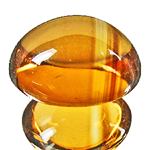
Distinct colour zoning, clearly visible in a cabochon
Attention: the market is flooded with synthetic citrines which are very hard to identify. Be particularly alert with intensely coloured eyeclean stones. The presence of colour zoning is not (any more) proof of natural origin.
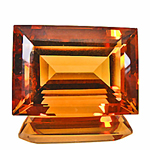
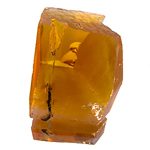
Hydrothermally produced synthetic citrine
The rough piece contains a remnant of the seed crystals suspension wire
We buy eyeclean stones only from reliable suppliers - well, actually we, of course, buy all our stones from reliable sources only ;-) - and only if we get a chance to inspect the rough material ourselves. No matter if we order from a factory or give our own rough for cutting, our local agents monitor the whole cutting process.
Citrine shop
 Deutsch
Deutsch